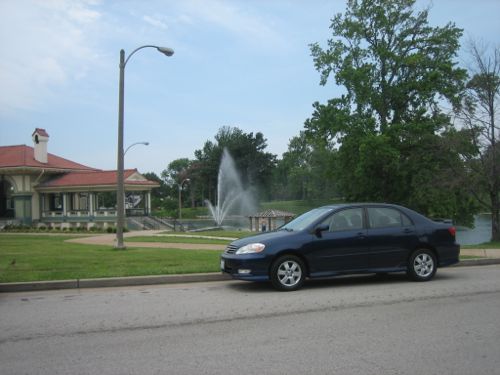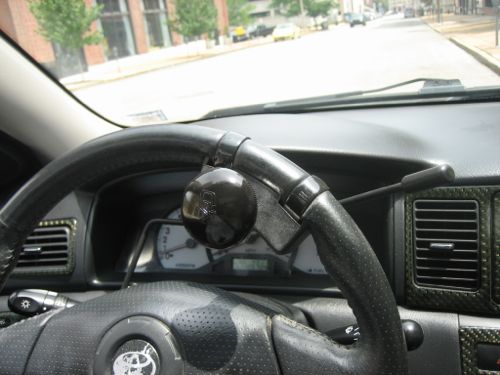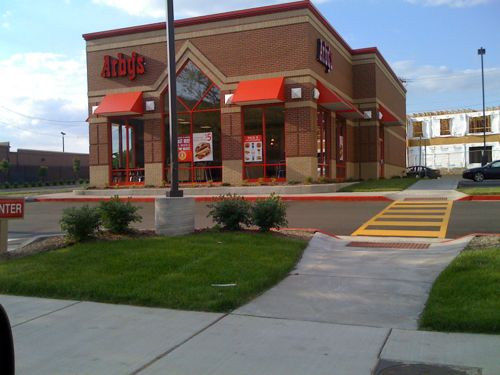What is an Accessible Route?
I often write about an “accessible route” (or lack thereof), but what constitutes an accessible route? In the days of walkable urbanism and streetcar suburbs you didn’t have wheelchair access but you also didn’t have multiple stores on 20+ acre sites connected only by large surface parking lots. In those days all were connected by this thing we call a sidewalk.
Decades now of building for the car and not humans has destroyed the ability for a pedestrian, disabled or not, to reach the main entry of many businesses from the public sidewalk without having to traverse space occupied by cars. However guidelines relating to the 1990 Americans with Disabilities Act (ADA) intended to make all future establishments reachable from the public sidewalk without having to walk though driveways where cars are coming and going.
The ADA itself just establishes the fundamental civil right to be granted full access to where the general public is permitted. However, through the “Access Board” the rules are established. The rules (guidelines) are known as ADAAG (pronounced A-Dag) — The ADA Guidelines for Accessible Buildings and Facilities. Enforcement of the ADA falls to the federal Department of Justice. However, municipalities, counties and states are free to adopt the ADAAG guidelines as part of their own requirements.
This brings me to my original question, what is an accessible route? For the answer we go to section 4.3 of ADAAG. Much of this section deals with halls and other routes. But one section, if enforced, would change the face of sprawl development:
4.3.2 Location.
(1) At least one accessible route within the boundary of the site shall be provided from public transportation stops, accessible parking, and accessible passenger loading zones, and public streets or sidewalks to the accessible building entrance they serve. The accessible route shall, to the maximum extent feasible, coincide with the route for the general public.
(2) At least one accessible route shall connect accessible buildings, facilities, elements, and spaces that are on the same site.
Developers & cities on which they work have down the route from accessible parking. They just tend to ignore the rest. But “and public streets or sidewalks” is pretty clear. In part #2 above the guidelines require all an accessible route between locations on the same site. This is really just basic sound planning but sadly it is ignored more often than followed.
I’ve shown you numerous examples before. The new Lowe’s in Loughborough Commons is not reachable along an accessible route from a public street. New free-standing Starbuck’s facilities in the area such as the one on Watson and the latest on Broadway lack accessible routes from the adjacent public sidewalk. The entire development at Gravois Plaza lacks an accessible route to any of the store entrances much less all of them. It is just as bad if not worse out in sprawl-ville. For example Brentwood Promenade is just west of a MetroLink station yet none of its stores are accessible from the public sidewalk and even once you are there going from one store to the next cannot be done on an accessible route. Sometimes it is a mixed bag. The new shopping center in Dardene Prairie has a connection from one public sidewalk to the Target & JCPenny but it then fails to connect to other buildings within the site. The typical fast food joint or strip center in an out parcel is often just an island in a sea of asphalt for cars.
If cities required developers, especially those receiving tax incentives, to follow the ‘accessible route’ requirement it would actually make the developments better for all the customers not just those who happen to be disabled. The parent with a five year old and a baby in a stroller could easily get from store A to store B without having to brave the dangers of taking their two offspring through a busy & crowded parking lot or having to load them back in the car to drive closer to a store within sight. Even if it is just a nice day and you’d rather walk than drive, following this guideline makes that a more pleasant possibility.
Compliance is not an impossibility but rather a shift in thinking away from the auto only status quo. Examples I’ve found include a former mall site in Bloomington-Normal,and an Arby’s on Lindell. One of the best examples is a mixed-use project in the bay area that I found in December 2006.
Walkable need not exclude cars. Sadly so much time is spent by Architects and Civil Engineers figuring out traffic patterns into and out of shopping centers that pedestrian traffic concerns is short changed. People will say that nobody walks in suburbia so why bother. If we look deeper we can see that the design of the spaces is largely unfriendly to pedestrians so it is no wonder that nobody walks. People do want to walk but they need connecting sidewalks to do so.
 For obvious reasons I bought one with an automatic transmission — no extra hand to shift with (while keeping the other on the wheel) nor a reliable leg to activate a clutch. I also wanted a vehicle with power windows because trying to use my right hand to roll down the driver’s window would not be easy. The Corolla has an outstanding reliability record and excellent fuel economy. This Corolla, like most, was assembled in the joint venture Toyota/GM plant known as
For obvious reasons I bought one with an automatic transmission — no extra hand to shift with (while keeping the other on the wheel) nor a reliable leg to activate a clutch. I also wanted a vehicle with power windows because trying to use my right hand to roll down the driver’s window would not be easy. The Corolla has an outstanding reliability record and excellent fuel economy. This Corolla, like most, was assembled in the joint venture Toyota/GM plant known as 
